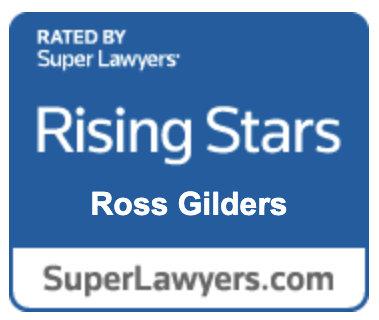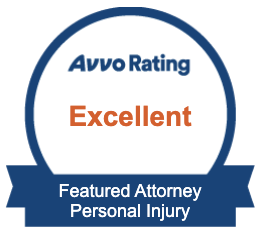A Safety Guide To Preventing Slip and Falls in Gaylord
- Mike Stein

- May 22, 2024
- 6 min read
Updated: Jan 17

Owning a business is a huge undertaking. With numerous responsibilities under your belt, it can be easy to overlook the safety measures you must establish.
Slips and falls are the most common accidents in many commercial and residential spaces. Slip and fall accidents can cause serious injuries to customers, employees, and even yourself.
You may face hefty legal consequences and financial repercussions when a visitor is hurt on your property. That’s why taking the necessary steps to prevent slips and falls in your business is crucial.
Understanding Premises Liability Law
Premises liability law is a legal principle that holds property owners and occupants responsible for maintaining safe conditions on their premises. This principle applies to residential and commercial properties and establishes the duty of care that property owners owe to individuals inside their property.
The core concept behind premises liability law is that property owners are legally obligated to ensure their premises are reasonably safe for visitors and guests. Slip-and-fall accidents are among the most common accidents that could occur within private premises.
These accidents are influenced by various factors, both environmental and structural. Regardless, the property owner must anticipate these elements and prepare their properties appropriately.
Tips and Best Practices for Businesses and Property Owners
As discussed above, business and property owners are responsible for protecting guests within their premises. Here are some tips and best practices for businesses and property owners to prevent slip and fall accidents, organized by specific strategies.
Create a Comprehensive Accident Management Strategy
You should have a plan for when accidents occur on your property and how you can avert such instances. For starters, it’s critical to have a workflow about what to do and who the points of contact are when an emergency arises.
You can also implement a schedule for routine premises inspections to identify hazards such as uneven flooring, spills, or loose carpeting. It’s also a good idea to train employees on hazard recognition, proper cleaning techniques, and protocols for addressing spills and other hazards.
Use Signs To Warn People
Place warning signs in areas with hazards, such as wet floors or recently mopped areas. These signs will inform passersby about the danger and could also relieve you of any legal burdens when an accident ensues. Ensure that the signs are visible and easy to understand.
Consider using signs with symbols or multiple languages to ensure comprehension by all visitors, including those who may not speak the primary language. This option is essential for lodging and accommodation businesses.
Lighten up Your Pathways
Ensure that outdoor pathways, parking lots, and indoor areas are well-lit, especially during darker hours. Proper lighting ensures passersby have perfect visibility of their path and prevents unwanted slips and falls. Install motion-sensor lighting in areas with low traffic to conserve energy.
You should also schedule regular maintenance for lighting fixtures to ensure they remain operational and replace bulbs promptly when they burn out. Oftentimes, owners only address defective bulbs when it’s too late.
Address Walkway Issues Immediately
Train staff to address walkway issues — such as spills or debris — immediately upon discovery. This prompt response could mitigate serious accidents. Establish clear procedures for reporting and responding to hazards.
If the walkway has a structural problem (i.e., broken tiles or stairs), you should prevent guests from walking on it. Keep the area restricted until you have fixed the problem.
Declutter Regularly
Keep walkways, aisles, and common areas free of clutter, equipment, and obstacles. Implement regular decluttering schedules to maintain clear pathways. Provide designated storage areas for equipment and supplies to prevent them from obstructing walkways or becoming tripping hazards.
Gaylord-Specific Environmental Factors Contributing to Falls
While slip-and-fall hazards are similar everywhere, some places have unique factors that could exacerbate the occurrence of this accident. Here are some specific environmental factors contributing to slip-and-fall accidents in Gaylord, MI.
Snow and Ice
Gaylord, MI, experiences heavy snowfall and freezing temperatures during the winter months, leading to the massive accumulation of snow and ice on sidewalks, parking lots, and other outdoor surfaces. These conditions can significantly increase the risk of slips and falls.
Property owners should have a snow removal plan in place, including plowing, shoveling, and applying ice melt or sand to walkways and parking lots. Make sure you monitor weather forecasts and respond promptly to snow and ice accumulation.
Slippery Slopes
The terrain in Gaylord often includes slopes and inclines, which can become particularly hazardous when covered in snow or ice. These slippery slopes can make walking or driving challenging and increase the risk of slips and falls.
Installing anti-slip measures such as traction mats or abrasive materials on slopes can help improve traction and reduce the risk of falls. Regularly clearing snow and ice from slopes and applying de-icing products can mitigate hazards within the property.
Uneven Surfaces
Uneven surfaces — such as cracked pavement or sidewalks — are common in Gaylord and can pose tripping hazards, especially when covered by snow or ice.
Property owners should regularly inspect walkways and surfaces to identify and repair uneven areas. Promptly addressing cracks, bumps, or other irregularities can help prevent trips and falls. Additionally, using non-slip coatings or materials on uneven surfaces can enhance traction and reduce the risk of slipping.
What To Do if Someone Is Injured in Your Property
If someone is injured on a property or at a business, the property or business owner must respond promptly and appropriately. Here are the steps they should take:
Ensure Safety: The immediate priority is to ensure the injured person’s safety. If necessary, call emergency services (911) for medical assistance. Provide any necessary first aid or assistance while waiting for help to arrive.
Document the Incident: The property or business owner should document the details of the incident, including the date, time, and location of the accident, as well as a description of what happened.
Preserve Evidence: It’s essential to preserve any evidence related to the incident, such as photographs of the accident scene, maintenance records, or surveillance footage.
Report to Insurance: Property or business owners should report the incident to their insurance provider immediately. This report includes general liability insurance or property insurance policies.
Never Assume Guilt: You should not be the first to take liability for the accident. Let your lawyer do the legwork and await their advice on the tricky situation.
Seek Legal Advice: An attorney can help navigate the legal complexities of the situation and provide guidance on how to proceed, especially if there is potential liability or a claim is filed against them.
Legal Responsibilities of Property Owners in Gaylord
As reiterated, property and business owners have legal responsibilities to ensure the safety of individuals who enter their properties. As described in the Michigan premises safety laws, an accident within the property becomes a property owner’s responsibility if they fail to address foreseeable or existing issues.
However, the owner’s liability could also change depending on the type of visitor they have on their property. Visitors are typically categorized as invitees, licensees, or trespassers, and the level of duty of care owed to each category may vary:
Invitees: Individuals invited onto the property for the owner’s benefit — such as customers or clients — are owed the highest duty of care. Property owners must regularly inspect the premises for hazards and either fix or warn about any dangers.
Licensees: Individuals who have permission to be on the property but are not there for the owner’s benefit, such as social guests, are owed a moderate duty of care. Property owners must warn licensees about known dangers that may not be obvious.
Trespassers: Individuals who enter the property without permission are generally owed a lower duty of care. However, property owners still cannot intentionally harm trespassers and must warn them about known dangers if they are likely to trespass.
Property owners must provide adequate warning of known hazards that may not be immediately obvious to visitors. This warning may include using signs, barricades, or other means to alert individuals to potential dangers.
Since slip-and-fall accidents could be classified under personal injury cases, injured visitors have three years from the date of injury to sue property owners for their damages.
Contact Our Team for Astute Gaylord Legal Advice
Property and business owners are responsible for creating a safe space for visitors. However, accidents can still happen despite taking proper precautions.
If you’re a property owner facing a premises liability claim or need legal advice on your options after an incident has occurred within your property, our team at Michigan Lawsuit can help.
Our experienced attorneys have an astute understanding of Michigan’s premises liability laws and have successfully represented clients in various personal injury claims, including slip-and-fall accidents. Contact us now for your consultation.









Comments